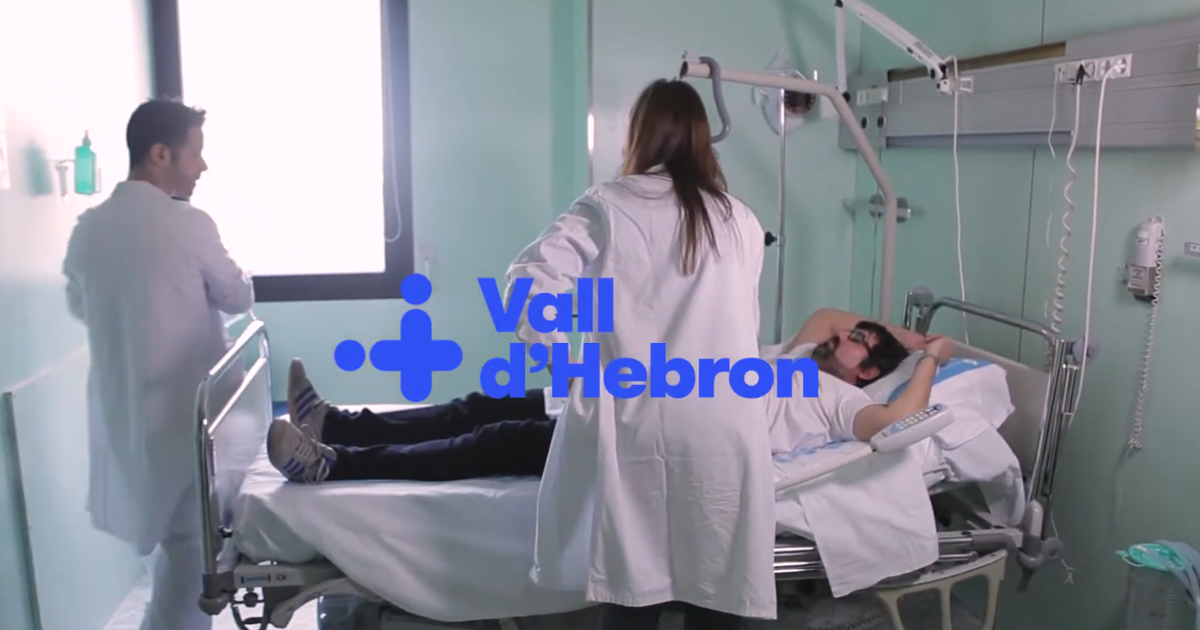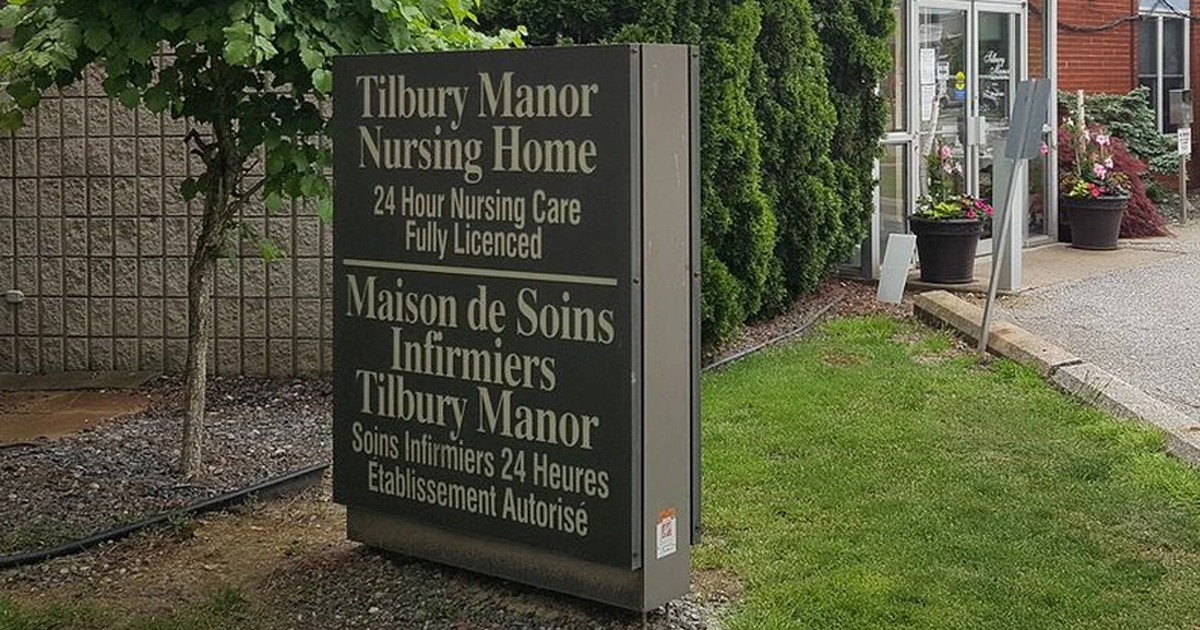The Leading Change Toolkit is a free, online, open-access evidence-informed implementation resource. It focuses on the uptake and sustainability of knowledge – or evidence – and uses two complementary frameworks to help you accelerate your success including the Social Movement Action and Knowledge-To-Action Frameworks. The toolkit also includes a section on how to engage persons with lived experience in a change initiative and/or as a member of a change team.
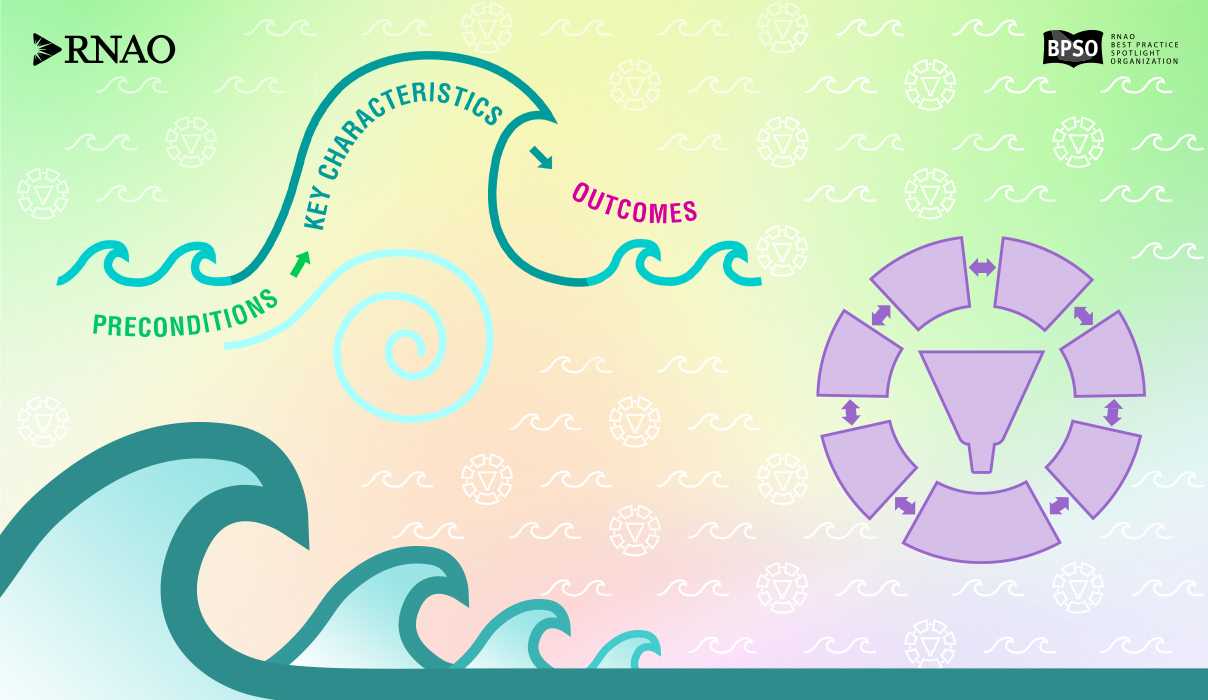


In this part of the change journey, the practice change is planned with a goal of achieving and, ultimately, sustaining it.

In this part of the change journey, the practice change is achieved through mobilized staff engagement and strategic and tailored actions.

In this part of the change journey, the practice change is sustained through strategies to support ongoing staff engagement and tailored actions.
Accelerate your success with two complementary frameworks
The Leading Change Toolkit features two complementary frameworks: the Social Movement Action (SMA) Framework and the Knowledge-To-Action (KTA) Framework. To get started on the path to success, you can use components of both of these implementation frameworks as tools to guide your process. Look for the linkage icon and other tips and tools throughout the toolkit for examples of links between the SMA and KTA Frameworks to help you apply both frameworks together to accelerate your success.
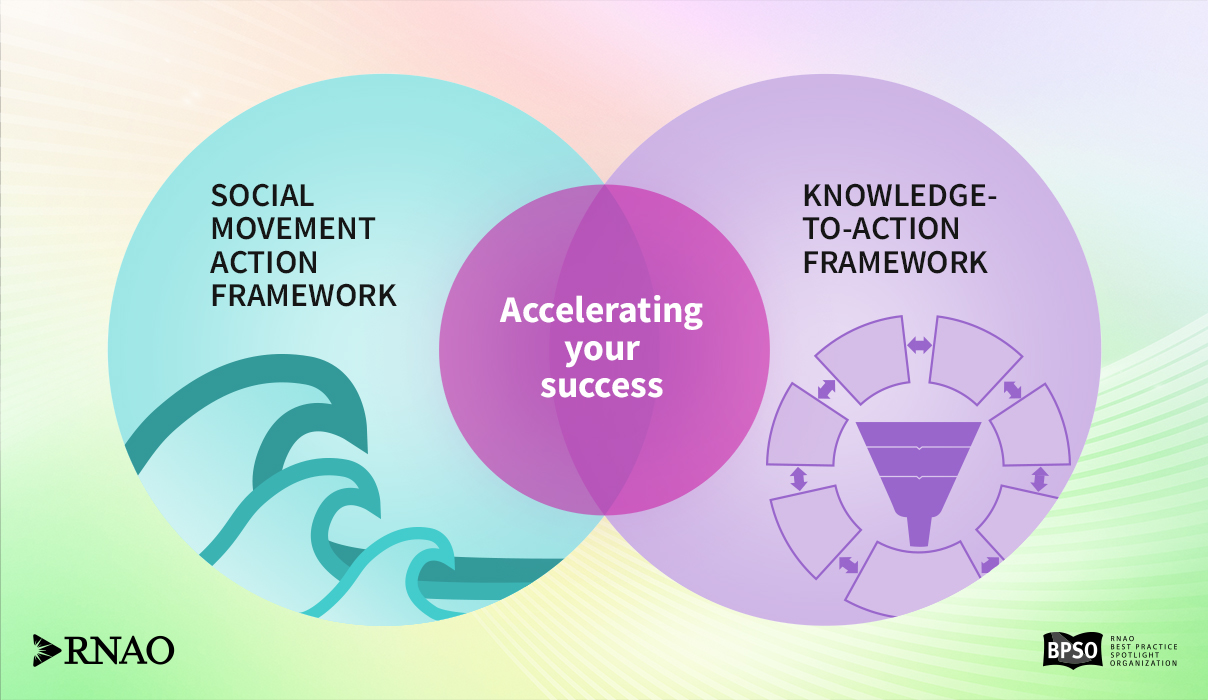
Social Movement Action Framework
The Social Movement Action (SMA) Framework (Grinspun et al., 2020; Grinspun et al., 2022) is a collection of 16 elements that illustrate how grassroots, people-led social movement action can be used to achieve knowledge uptake and sustainability. The framework is structured according to “preconditions”, “key characteristics” and “outcomes”. It depicts change that develops in response to:
- a shared concern or strongly desired change, and
- a receptivity to change fueled by energy for change that results in mobilized actions by engaged individuals, groups and/or organizations.
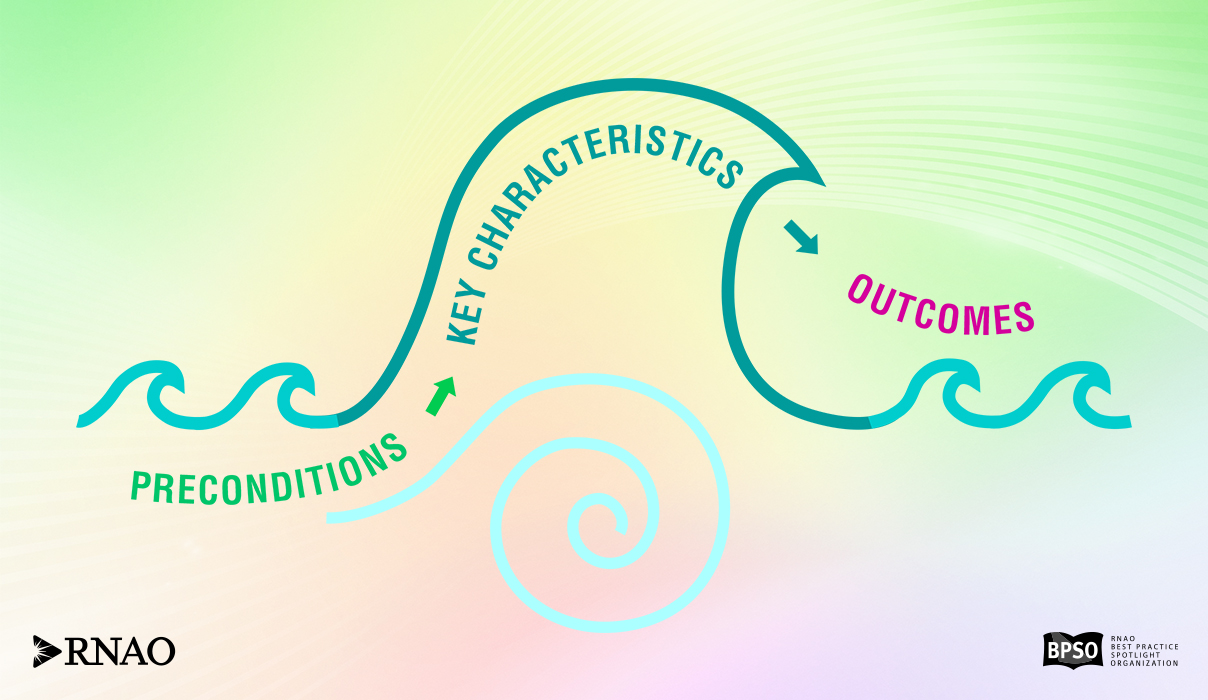
Knowledge-to-Action Framework
The Knowledge-to-Action (KTA) Framework (Graham et al., 2006) provides a structured and systematic change process that includes a seven-phase action cycle to support the implementation and sustainability of a knowledge tool, such as an RNAO best practice guideline. The KTA Framework is based on more than 30 change theories and includes two main parts – the knowledge creation process and the action cycle phases.
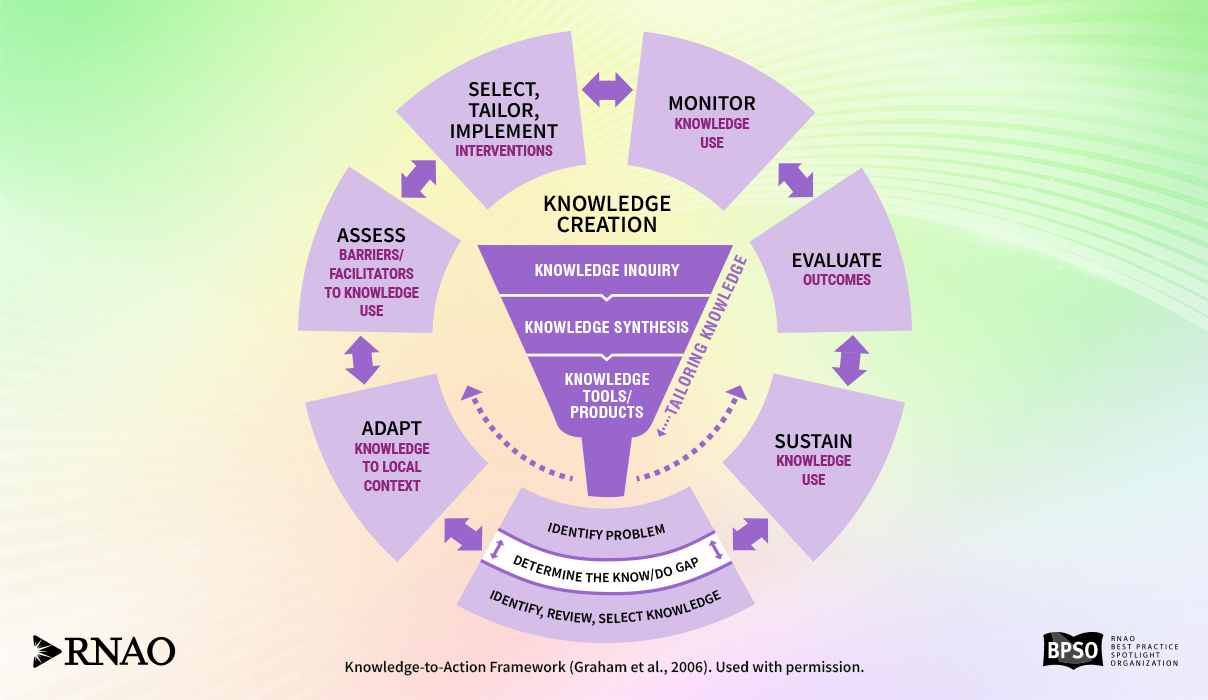
Engaging persons with lived experience
Engaging persons with lived experience means intentionally partnering with persons/patients, families and/or communities throughout the planning, delivery and evaluation of health services to improve quality and safety (CPSI, 2017; RNAO, 2015).
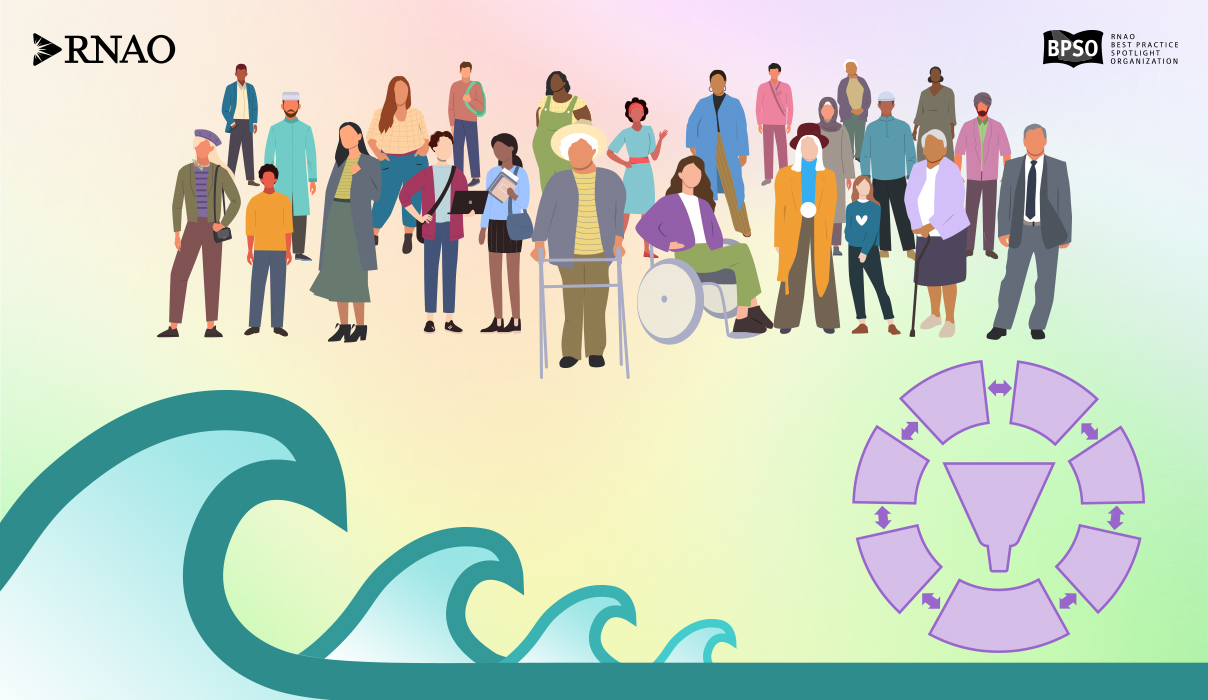
Case studies
Case studies are included to illustrate one or more components of the two frameworks or the journey process. Many of the examples are of RNAO’s Best Practice Spotlight Organizations® (BPSO®) that participate in a global social movement of knowledge translation.
Championing clinical excellence in acute care
Vall d’Hebron Barcelona Hospital Campus championed clinical excellence through nurses' and other staff's leadership and intrinsic motivation.
Conducting gap analyses to implement new clinical practices at Tilbury Manor
Tilbury Manor, a long-term care home, chose to focus on provincially-mandated “required programs” when seeking to improve resident care using a gap analysis.
Engaging persons with lived experience in a change process
A case study from Holland Bloorview Kids Rehabilitation Hospital focused on engaging persons with lived experience in a change process.
Want to learn more about using the strategies of the SMA and KTA frameworks to support your change? Sign up for the RNAO Best Practice Champions training course.

